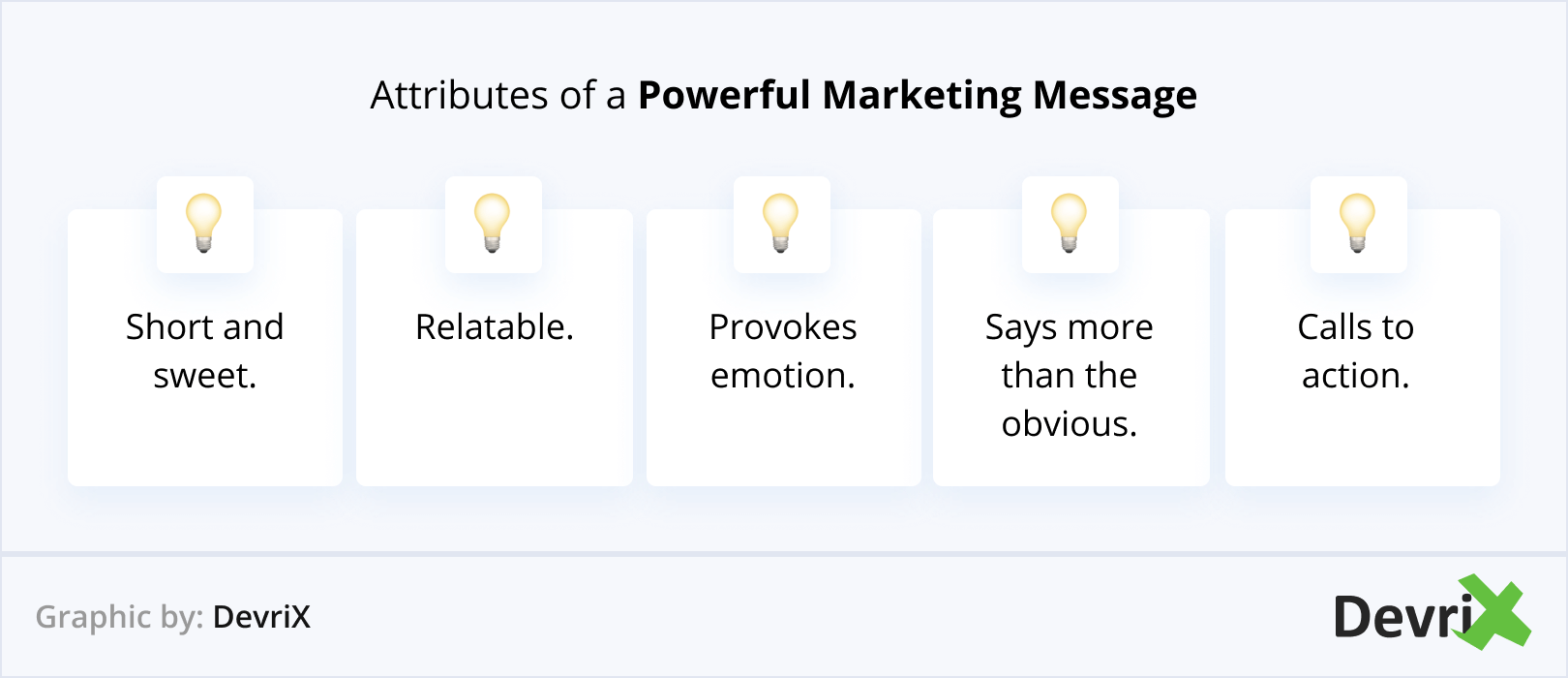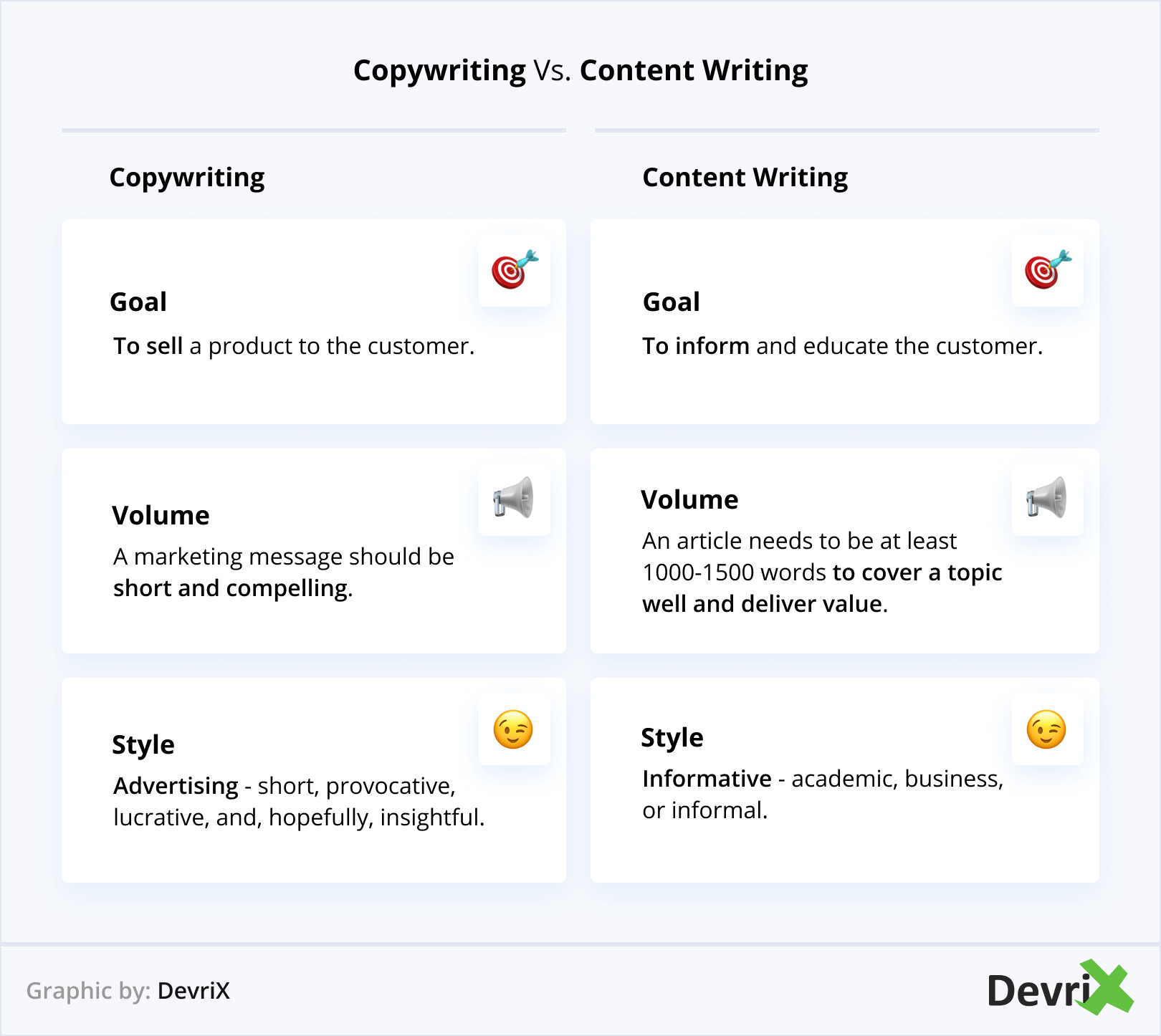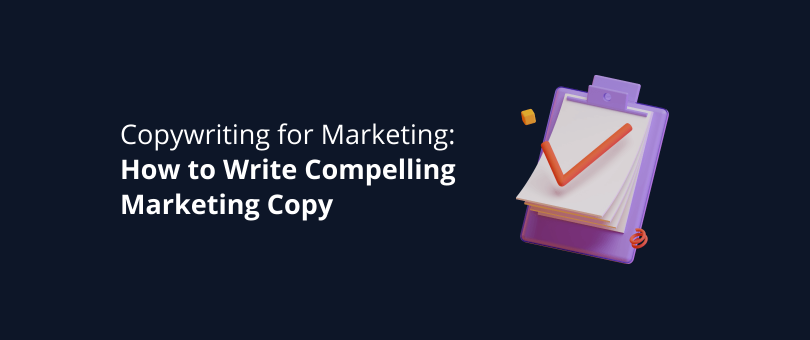Digital marketing is one of the industries that best monetize the power of the written word. Online, you may test your marketing copy, compare results and find out what works and what needs to be worked on. Furthermore, the results are immediate, and you can make changes right away without any additional costs.
However, copywriting for marketing is not an easy task. Digital campaigns have easily trackable ROI, where every word counts. Marketing copywriters have to be able to compose a message that creates excitement, inspires, and encourages engagement – all at the same time. Furthermore, their copy should be creative enough to stand out in the avalanche of advertisements a person faces every day.
In a nutshell, they should be able to sell a product to a customer who doesn’t want to be sold to and do it in just a fistful of words.
So how do you manage that? Read on to find out 7 pro rules on how to write marketing copy that sells.
What Is Copywriting in Marketing?
Marketing copy is the message you create to convince your target audience to buy your products. Depending on the campaign, it may be featured on your website, landing pages, social media profiles, ads, emails, designs, or whatever other communication channels you use.

What defines a powerful marketing message, is that it is:
- Short and sweet.
- Relatable.
- Provokes emotion.
- Says more than the obvious.
- Calls to action.
Copywriting Vs. Content Writing
Copywriting for marketing is often mistaken with content writing, but the two are very different and, more often than not, they serve different strategies.
Content writing is a tool in the pull strategy (also known as inbound marketing). Content writers create articles and blog posts, including but not limited to tutorials, how-to guides, and educational pieces.
Copywriters, on the other hand, are more focused on push strategies (a.k.a. outbound marketing) such as advertising, email outreach, text for design creatives, etc.

All in all, what sets apart copywriting from content are the goal, volume, and style of the text.
- Goal. The key difference is that the goal of marketing copy is to sell a product to the customer, while the goal of content is to inform and educate.
- Volume. A marketing message should be short and compelling, while an article needs to be at least 1000-1500 words to cover a topic well and deliver value.
- Style. Copywriting relies on an advertising style – short, provocative, lucrative, and, hopefully, insightful. Content writing, on the other hand, is informative, and depending on the topic, may be academic, business, or informal.
However, while the two disciplines require a different approach, they do have some touchpoints, and skilled writers can often switch roles when they need to.
Copywriting for Online Marketing
Every writer, be they a marketer or not, has their own process when developing an idea. Some rely heavily on inspiration, others draft and rework multiple times, and the successful ones usually use a combination of both.
However, copywriting for marketing requires more than this, because there are additional factors in the equation.

1. Understand the Customer
How you sell something, depends on who you are selling it to. That’s why the first and foremost important step of writing marketing copy is to understand the customer. The goal of the message should be to make people feel an emotional connection to the brand, see the product as something they need, and be tempted by its value.
Furthermore, the customer should feel your message was written especially for them. Personalized marketing is the most successful advertising strategy, and it requires in-depth knowledge of the customer. You should know who your target audience is, what makes them tick, what they love, what they dislike, and what moves them.
The best way to achieve this level of personalization is to rely on market research. You can delve even deeper by studying the target audience’s behavior on social media, reading reviews, and going over voice of the customer research files, if available. This will provide you valuable customer insights, and will serve as the foundation of the message you compose.
2. Understand the Product
Once you know the customer well, you should research the product in order to better understand it and its strongest selling points. The best way to do this is to test the product yourself, if possible. If it’s not, make sure you gather as much information as you can:
- Meet with the R&D team that developed the product.
- Talk to customer service reps who work for the brand.
- Read into the features and specifications, and the user manual.
- Refer to any prototype testing videos and archives.
- Review user satisfaction surveys and observational research results.
- Check out the competition and their products and copy.
- Study any available customer journey maps.
Collecting this knowledge will allow you to figure out how the product may respond to the customer’s needs and how it may exceed their expectations. Combined with any customer insights you may already have, you can walk a mile in the client’s shoes and make a list of selling points.
3. Highlight, Don’t Overexplain
Once you know the product and the customer well, you can now focus on drafting your copy.
As mentioned, copywriting is not content writing. So try to highlight only the most important things the customer needs to know, without going into unnecessary details. If a prospect is able to make a decision without certain information and it’s not likely to change their mind in any way, skip it.
Furthermore, be sure to give anything you write some shelf time, so you can notice any needless over-explanations. Distancing yourself allows you to have a more critical look at your work and its shortcomings, and may help you to significantly improve the value and quality of your text.
4. Tier the Information
Customers are likely to be exposed to your message on different communication channels at different stages of their journey. Therefore, you should tier the information and provide it in bite-sized chunks that comply with each medium’s purpose.
For example, a Facebook ad should be a teaser with just a grain of information. Its goal is to be attractive and eye-catching enough for the customer to click on it and visit the landing page. The landing page should have more information, but still only the minimum, and should include a compelling call-to-action. The content should also provide a link to the main campaign page where anyone who needs more details can read the full story.
5. Tighten Your Copy
The challenge of copywriting is to say more with less. That’s what makes it difficult to create, and so powerful if you succeed.
Therefore, even though it may be tempting to add a few more adjectives and adverbs here and there, you shouldn’t overdo it. It may feel that they help you express a thought more clearly, but what they usually do is make the message clumsy and blur the main idea.
Simplicity is a powerful tool if you know how to use it. It leaves space for the reader’s imagination and enables you to tell a whole story with a single sentence.
6. Utilize the Creatives
Marketing relies on both images and words to convey a message. The creatives – photos, images, graphics, etc. – and the text should complement each other to create a deeper meaning and a more valuable experience.
Furthermore, you can create a series of similar creatives with related messages that show the idea from different points of view, and make it more interesting. This tactic enables you to use copy that’s relatable to different segments of your audience and build a campaign that’s both personalized and with a broad scope.
When using various visual formats, make sure to explore their potential, and how their specific requirements can contribute to the text and add value to the overall campaign.
7. Be Truthful
One of the reasons why consumers nowadays dislike (and often ignore) advertisements is that they have been lied to before. And we don’t only mean false advertising – needless exaggeration counts as well.
It’s easy to get carried away and be tempted to paint a product as more than it actually is. However, not only is it unethical, but it’s also bad for business. Disappointed customers create the worst kind of word-of-mouth marketing out there and may ruin all your effort.
Respectable companies should always strive to be truthful in their marketing copy and focus on how the customer can really benefit from their products.
Bottom Line
Copywriting for marketing is not an easy task. It takes a lot of skill, research, and insight to craft a compelling marketing message, and even more effort to refine it to perfection. However, if you understand the customer and the product well, and you put in the work, this will give you a significant advantage.
By adapting the copy for different communication channels, and a/b testing it to find what performs best, you may find the right formula for you, and obtain the key to the customer’s heart.







